-
Louisiana’s westernmost, low-lying regions on track to drown under sea level rise
Without major efforts to rebuild Louisiana’s wetlands, which serve as bulwarks against waves and rising seas, the state’s coast has little chance of withstanding the accelerating rate of sea level rise, a new study concludes. Wetlands can provide crucial protection from rising seas, especially in Louisiana’s low-lying westernmost areas, but the habitats have faced years of decline, mostly from coastal erosion. The erosion results in part from levees that have been built along the Mississippi River. The levees block mud deposits that flow to and underlie much of the Louisiana coast. The land, cut off from new building material, begins to sink.
-
-
World’s mineral resource will not be exhausted any time soon

Recent articles have declared that deposits of mineral raw materials (copper, zinc, etc.) will be exhausted within a few decades. An international team, including the University of Geneva (UNIGE), Switzerland, has shown that this is incorrect and that the resources of most mineral commodities are sufficient to meet the growing demand from industrialization and future demographic changes. Future shortages will arise not from physical exhaustion of different metals, but from causes related to industrial exploitation, the economy, and environmental or societal pressures on the use of mineral resources.
-
-
“Spectral fingerprinting” sees through concrete to detect early corrosion

Doctors use X-ray, CT scan, or MRI to determine whether a patient has suffered any internal injuries. Researchers are using the same principle, but in a more powerful form, to detect corrosion, the primary danger threatening the health of the steel framework within the nation’s bridges, roads, and other aging physical infrastructure. What they have developed is a noninvasive “spectral fingerprint” technique that reveals the corrosion of concrete-encased steel before it can cause any significant degradation of the structure it supports.
-
-
Scientists test links between extreme weather and climate change
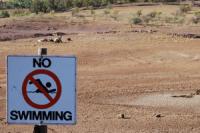
After an unusually intense heat wave, downpour or drought, climate scientists inevitably receive phone calls and emails asking whether human-caused climate change played a role. In the past, scientists typically avoided linking individual weather events to climate change, citing the challenges of teasing apart human influence from the natural variability of the weather. But that is changing. “Over the past decade, there’s been an explosion of research, to the point that we are seeing results released within a few weeks of a major event,” says one expert.
-
-
Sea levels could rise by more than three meters: New study
Global sea levels could rise by more than three meters – over half a meter more than previously thought – this century alone, according to a new study. The projections explicitly accounted for three scientific uncertainties – the speed at which the Antarctic ice sheet is going to melt, the speed at which the ocean is warming up, and the amount of emitted greenhouse gases over the twenty-first century.
-
-
Uber picks Dallas, Fort Worth as test cities for flying vehicle network
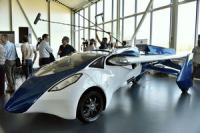
Uber is looking to North Texas as a testing ground for its initiative to make intra-urban flying vehicle rides a reality. The company announced Tuesday that Dallas and Fort Worth are its first U.S. partner cities for what its dubbing the “Uber Elevate Network.” The company hopes to have the first demonstration of how such a network of flying, hailed vehicles would work in three years. The company also tapped a Dallas real estate development firm and Fort Worth’s Bell Helicopter to develop pick-up and drop-off sites for electric vehicles that would take-off and land vertically.
-
-
Timber skyscrapers may soon transform London’s skyline
The use of timber as a structural material in tall buildings is an area of emerging interest for its variety of potential benefits; the most obvious being that it is a renewable resource, unlike prevailing construction methods which use concrete and steel. The research is also investigating other potential benefits, such as reduced costs and improved construction timescales, increased fire resistance, and significant reduction in the overall weight of buildings. London’s first timber skyscraper could be a step closer to reality as city engineers are finalizing their evaluation of a conceptual plans for an 80-storey, 300-meter high wooden building integrated within the Barbican.
-
-
Western U.S.: Loss in water from melting snowpack due to human influence
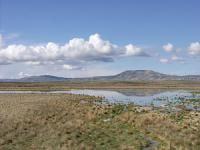
Peak runoff in streams and rivers of the western United States is strongly influenced by melting of accumulated mountain snowpack. A significant decline in this resource has a direct connection to streamflow, with substantial economic and societal impacts. An international team of scientists has found that up to 20 percent loss in the annual maximum amount of water contained in the western United States’ mountain snowpack in the last three decades is due to human influence.
-
-
Yes, we can do “sound” climate science even though it’s projecting the future
Increasingly in the current U.S. administration and Congress, questions have been raised about the use of proper scientific methods and accusations have been made about using flawed approaches. This is especially the case with regard to climate science, as evidenced by the hearing of the House Committee on Science, Space and Technology, chaired by Lamar Smith, on 29 March 2017. Chairman Smith accused climate scientists of straying “outside the principles of the scientific method.” Smith repeated his oft-stated assertion that scientific method hinges on “reproducibility,” which he defined as “a repeated validation of the results.” He also asserted that the demands of scientific verification altogether preclude long-range prediction. The kinds of statements are misguided. They show a woeful ignorance about science and how it works, and in particular about climate science. Consequently, they ignore sound advice on how to best plan for the future.
-
-
Planet’s response to greenhouse gas emissions: Models, observations not so far apart
How hot our planet will become for a given amount of greenhouse gases is a key number in climate change. As the calculation of how much warming is locked in by a given amount of emissions, it is crucial for global policies to curb global warming. It is also one of the most hotly debated numbers in climate science. Observations in the past decade seem to suggest a value that is lower than predicted by models. But a University of Washington study shows that two leading methods for calculating how hot the planet will get are not as far apart as they have appeared.
-
-
New filtration method makes water safe to drink
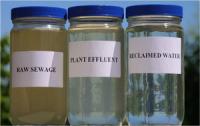
Researchers have created a membrane that removes viruses from treated wastewater and makes it safe for drinking. The new ultrafiltration method does not rely on chlorine, the commonly used chemical to purify water, which can cause contamination.
-
-
Flying car commercially available at a price of 1.2 million Euros

Bratislava, Slovakia-based AeroMobil last week unveiled the new model of the AeroMobil Flying Car at Top Marques Monaco, the world’s leading car show. The flying car offers customers the choice of “all the functionality and flexibility a car and an airplane can provide,” the company says. The flying car can travel in almost any weather conditions, and it has a flying range of about 1,000 km. For added safety, the flying car I equipped with a recovery ballistic parachute technology, which allows the pilot to bring an airborne vehicle back to ground by parachuting, rather than landing. The company says the production of AeroMobil’s first vehicle will be limited to a maximum of 500 units and is priced between 1.2 million and 1.5 million Euros.
-
-
Cybersecurity firm trains students for high-tech heroics
With newscasts regularly portraying a menacing picture of cybercrime, Indiana State University Professor Bill Mackey — and the students he teaches — is almost guaranteed job security. Perhaps the biggest news story this spring involves the Russians, the Democratic National Committee and, possibly, the Trump White House. It also involves exactly the focus of Mackey and his cyber security company, Alloy. Preventing the human missteps is exactly what Mackey’s enterprise does that’s different from almost everyone else: They marry the technological part (the computer-code breaking) with the human element for a mixture of tech and cybercriminology.
-
-
BP oil spill did $17.2 billion in damage to natural resources

The 2010 BP Deepwater Horizon oil spill did $17.2 billion in damage to the natural resources in the Gulf of Mexico, a team of scientists recently found after a six-year study of the impact of the largest oil spill in U.S. history. This is the first comprehensive appraisal of the financial value of the natural resources damaged by the 134-million-gallon spill.
-
-
Clean power planning
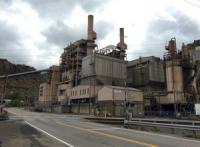
With a single executive order issued at the end of March, the Trump administration launched a robust effort to roll back Obama-era climate policies designed to reduce U.S. carbon dioxide (CO2) emissions. Chief among those policies is the Clean Power Plan, which targets coal and natural gas-fired electric power plants that account for about 40 percent of the nation’s CO2 emissions. Private and public-sector investors may see the executive order as a green light to double down on relatively cheap fossil fuels and reduce holdings in more costly, climate-friendly, non-carbon generation technologies such as wind, solar and nuclear. But they may want to think twice before making such transactions – and a new study details why it’s prudent to invest in carbon-free electricity now.
-
More headlines
The long view
New Technology is Keeping the Skies Safe
DHS S&T Baggage, Cargo, and People Screening (BCP) Program develops state-of-the-art screening solutions to help secure airspace, communities, and borders
Factories First: Winning the Drone War Before It Starts
Wars are won by factories before they are won on the battlefield,Martin C. Feldmann writes, noting that the United States lacks the manufacturing depth for the coming drone age. Rectifying this situation “will take far more than procurement tweaks,” Feldmann writes. “It demands a national-level, wartime-scale industrial mobilization.”
How Artificial General Intelligence Could Affect the Rise and Fall of Nations
Visions for potential AGI futures: A new report from RAND aims to stimulate thinking among policymakers about possible impacts of the development of artificial general intelligence (AGI) on geopolitics and the world order.
Smaller Nuclear Reactors Spark Renewed Interest in a Once-Shunned Energy Source
In the past two years, half the states have taken action to promote nuclear power, from creating nuclear task forces to integrating nuclear into long-term energy plans.
Keeping the Lights on with Nuclear Waste: Radiochemistry Transforms Nuclear Waste into Strategic Materials
How UNLV radiochemistry is pioneering the future of energy in the Southwest by salvaging strategic materials from nuclear dumps –and making it safe.
Model Predicts Long-Term Effects of Nuclear Waste on Underground Disposal Systems
The simulations matched results from an underground lab experiment in Switzerland, suggesting modeling could be used to validate the safety of nuclear disposal sites.
